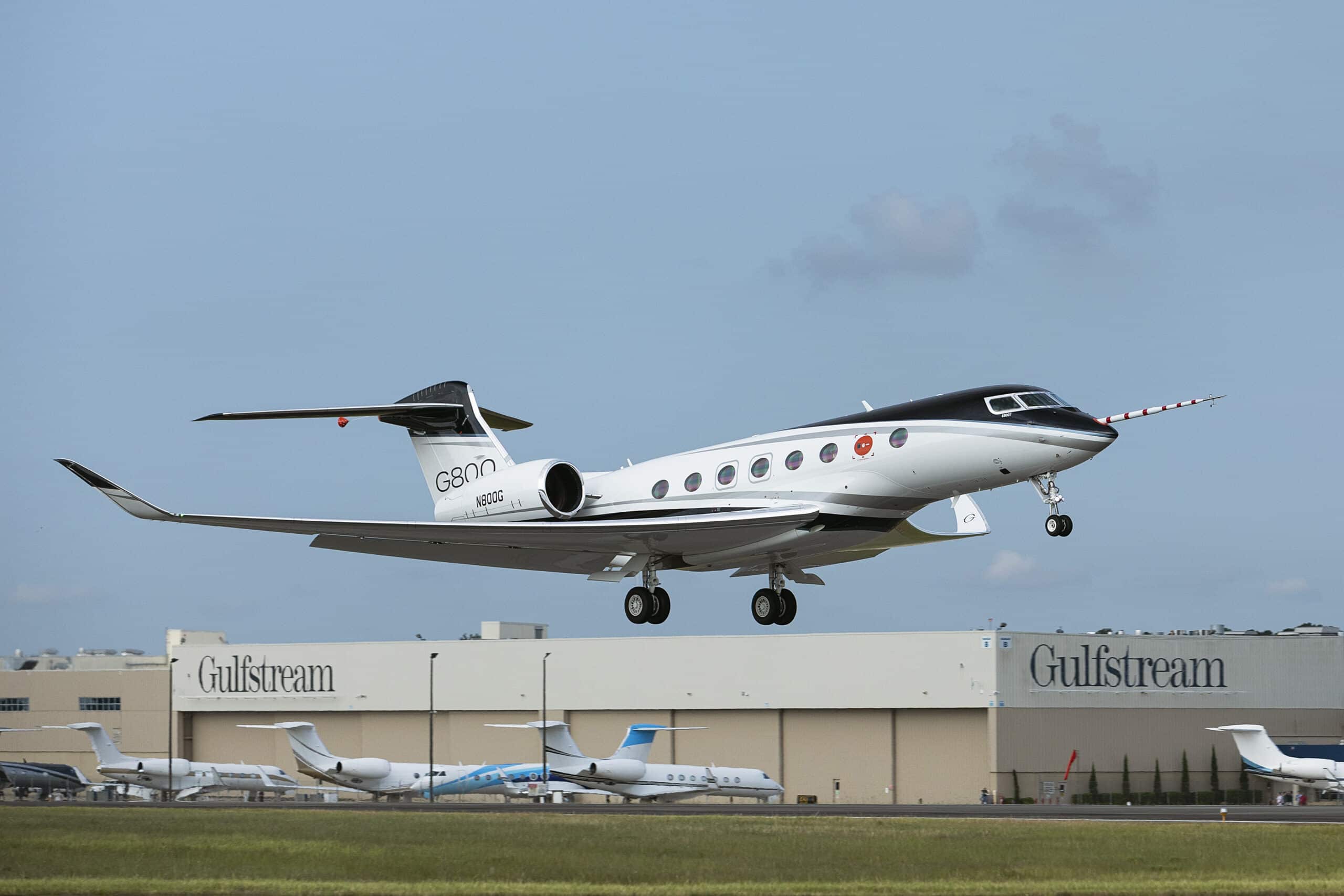Aerospace
ALL-NEW GULFSTREAM G800 MAKES FIRST FLIGHT.

Industry’s Longest-Range Aircraft Demonstrates Program Maturity, Launches Flight-Test Program.
Today, Gulfstream Aerospace Corp. reported that the brand-new, ultra long-range Gulfstream G800 had completed its first flight safely. This signified the official beginning of the flight-testing phase and company’s longest-range aircraft. The G800, which was announced in October 2021, is the newest member of Gulfstream’s next-generation fleet to take flight and move closer to customer deliveries.
The G800 took off from Savannah/Hilton Head International Airport at 9:00 am and arrived there two hours later. The aircraft completed the journey using a combination of sustainable aviation fuel, continuing with Gulfstream’s dedication to sustainability leadership in the aviation.
Gulfstream President Mark Burns stated, “We altered the game once again for our industry when the first G800 test aircraft rolled out at our announcement last fall. Gulfstream is able to build on its successes and create aircraft that go beyond client expectations ,because of its close customer relationships. With Gulfstream-designed aerodynamics and cabin technology, the G800 pushes the boundaries of performance even further. We expect that our customers will enjoy from the longer range at higher speeds in our exceptional cabin environment.
The G800’s advanced high-speed wing, designed by Gulfstream, and brand-new, high-thrust Rolls-Royce Pearl 700 engines allow it to travel 8,000 nautical miles (14,816 km) at Mach 0.85 and 7,000 nm (12,964 km) at Mach 0.90 with class-leading fuel efficiency. The G800 also features the latest in Gulfstream cabin technology and comfort, such as hand-crafted ergonomic seats, a high-definition circadian lighting system, 100% fresh air that is never recirculated, the lowest cabin altitude in the industry, a plasma-ionization air purification system, and 16 of the largest windows in the business. The G800 includes up to four living areas, or three living areas with a crew compartment, and it is able to accommodate up to 19 passengers.
The G800 is equipped with Gulfstream’s latest Symmetry Flight Deck and dual head-up displays with the new Combined Vision System, which integrates imagery from the Enhanced Flight Vision System and Synthetic Vision System, further enhancing safety and pilot situational awareness.
“In the last decade, we’ve announced eight new aircraft, all strategically timed to capitalise on market demand,” said Burns. “The G800 is generating a lot of interest, and this first flight brings us even closer to delivering a Gulfstream for every mission.”

Aerospace
Boeing Transfers Rocket Stage to NASA, Paving Way for Human Moon Mission

Boeing has achieved a significant milestone by providing NASA with the second core stage of the Space Launch System (SLS) rocket.
This crucial component, crafted at NASA’s Michoud Assembly Facility (MAF), is set to propel the Artemis II crew into lunar orbit, marking humanity’s return to deep space after a 50-year hiatus.
The monumental Boeing-built rocket stage, the largest element of the Artemis II mission, will embark on a journey aboard the Pegasus barge, traveling 900 miles to NASA’s Kennedy Space Center.
Comparison of two legendary aircraft B777x vs B747 aircraft:Click here
Upon arrival, it will be meticulously integrated with other essential Artemis II components, including the upper stage, solid rocket boosters, and NASA’s Orion spacecraft within the iconic Vehicle Assembly Building. This intricate integration process is a vital step toward the eagerly anticipated Artemis II launch, slated for 2025.
“Boeing-built products helped land humankind on the moon in 1969, and we’re proud to continue that legacy through the Artemis generation,” remarked Dave Dutcher, vice president and program manager for Boeing’s SLS program. “Together, with NASA and our industry partners and suppliers, we are building the world’s most capable rocket and paving the way to deep space through America’s rocket factory in New Orleans.”
NASA, Lockheed Martin Reveal X-59 Quiet Supersonic Aircraft:Click here
The delivery of Core Stage 2 marks a significant achievement in the evolution of the SLS rocket. Towering over 200 feet and powered by four RS-25 engines, this core stage, coupled with two solid-fueled booster rockets, will generate a staggering 8.8 million pounds of thrust. This immense power is crucial to launching Artemis II and future missions into the vast expanse of space.
The SLS rocket stands unparalleled in its capability to transport both crew and substantial cargo to the moon and beyond in a single launch. Its extraordinary capacity will facilitate the delivery of human-rated spacecraft, habitats, and scientific missions to destinations including the moon and Mars, ushering in a new era of space exploration.
-

 Travel1 week ago
Travel1 week agoAir India to Expand US Operations with Three New Routes After a Decade
-

 Travel2 weeks ago
Travel2 weeks agoWhy We Should Avoid These Stamps in a Passport
-

 Airlines1 month ago
Airlines1 month agoInvestigations Reveal Fake Chinese Titanium in Boeing and Airbus Jets
-

 Tech4 weeks ago
Tech4 weeks agoChina’s CATL Plans 1,800-Mile Electric Plane Launch by 2027
-

 Airport3 days ago
Airport3 days agoTop 10 Largest Airports in the World by Size
-

 Aerospace4 weeks ago
Aerospace4 weeks agoChina’s Fighter Jets Turn Wings into Autonomous Drones
-

 Airlines4 days ago
Airlines4 days agoAir India Rolls Out A350s for Delhi-New York JFK and Newark Routes
-

 Defence3 weeks ago
Defence3 weeks agoBoeing Enhances Chinook with New Engines and Block II Upgrades at $96 Million







